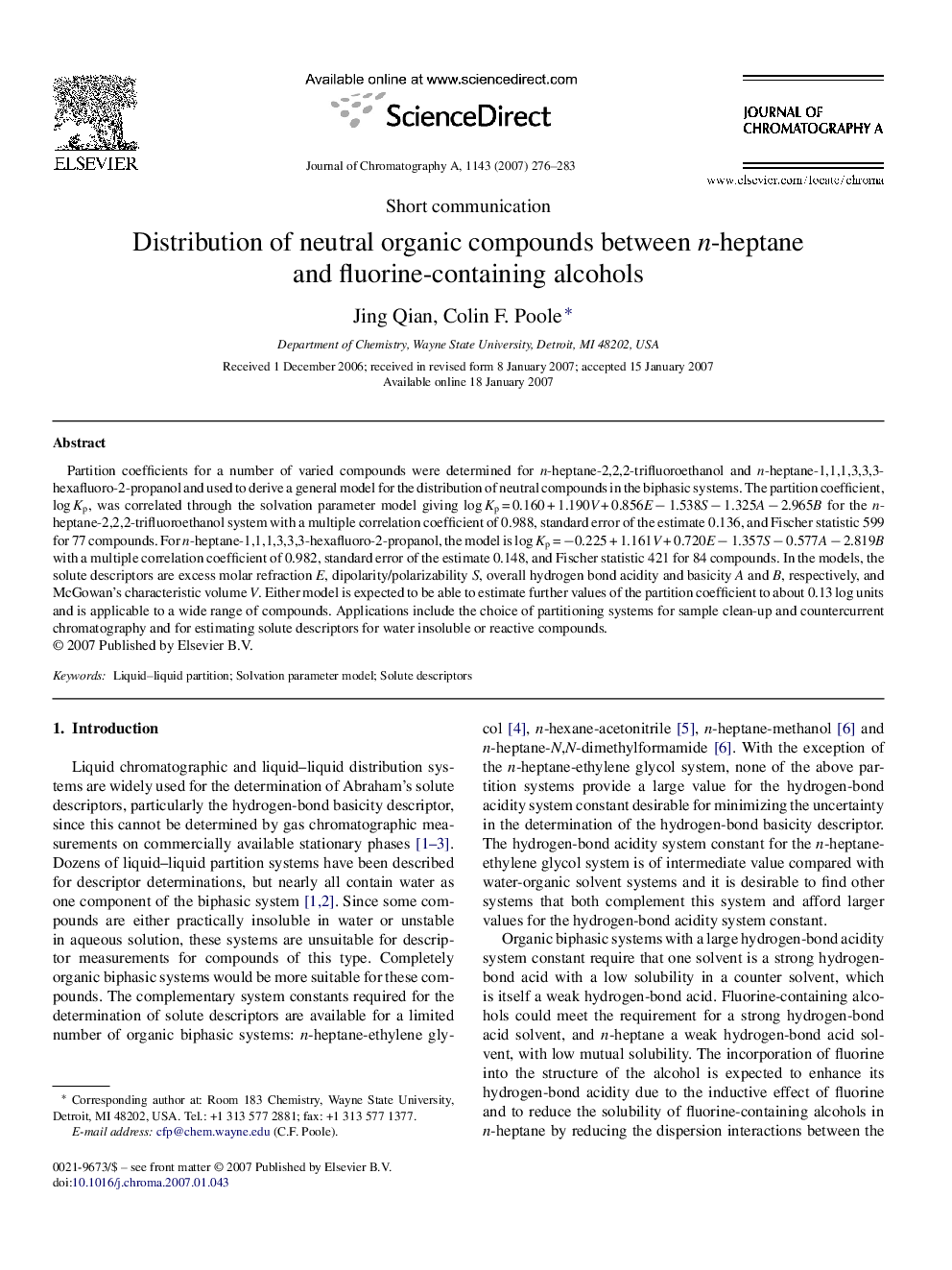| Article ID | Journal | Published Year | Pages | File Type |
|---|---|---|---|---|
| 1211179 | Journal of Chromatography A | 2007 | 8 Pages |
Partition coefficients for a number of varied compounds were determined for n-heptane-2,2,2-trifluoroethanol and n-heptane-1,1,1,3,3,3-hexafluoro-2-propanol and used to derive a general model for the distribution of neutral compounds in the biphasic systems. The partition coefficient, log Kp, was correlated through the solvation parameter model giving log Kp = 0.160 + 1.190V + 0.856E − 1.538S − 1.325A − 2.965B for the n-heptane-2,2,2-trifluoroethanol system with a multiple correlation coefficient of 0.988, standard error of the estimate 0.136, and Fischer statistic 599 for 77 compounds. For n-heptane-1,1,1,3,3,3-hexafluoro-2-propanol, the model is log Kp = −0.225 + 1.161V + 0.720E − 1.357S − 0.577A − 2.819B with a multiple correlation coefficient of 0.982, standard error of the estimate 0.148, and Fischer statistic 421 for 84 compounds. In the models, the solute descriptors are excess molar refraction E, dipolarity/polarizability S, overall hydrogen bond acidity and basicity A and B, respectively, and McGowan's characteristic volume V. Either model is expected to be able to estimate further values of the partition coefficient to about 0.13 log units and is applicable to a wide range of compounds. Applications include the choice of partitioning systems for sample clean-up and countercurrent chromatography and for estimating solute descriptors for water insoluble or reactive compounds.
